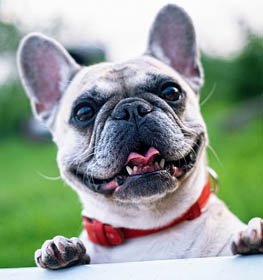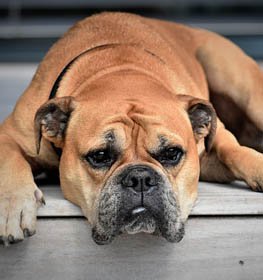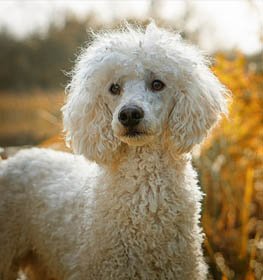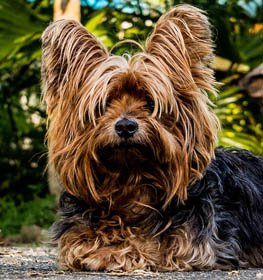Toy Poodle Information & Dog Breed Facts
Collection of all the general dog breed info about Toy Poodle so you can get to know the breed more.
| Group | Companion Dogs |
|---|---|
| Popularity Rank | 449 |
| Reviews | 5 |
| User Ratings | |
|
Compare the Toy Poodle With Other Dogs
Select at least one dog breed to make the comparsion. | |
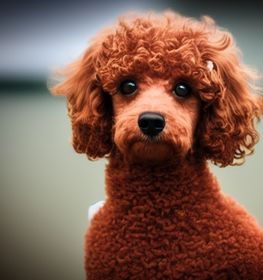 | |
| Origin | |
|
Common Names & Aliases
What other names is a Toy Poodle known by? Discover all traditional, regional and informal names used for this breed. | BarbonePudleTeacup PoodleTeddy Poodle |
|---|---|
|
Breed Classification
What type of dog breed is a Toy Poodle? Learn about its genetic classification and breeding category. | Purebred |
|
Size Classification
What size category is a Toy Poodle? Learn how big the Toy Poodle breed typically grows. | Small |
|---|---|
|
Weight Statistics
How much does a Toy Poodle weigh? Discover typical weight ranges for adult males and females of the Toy Poodle breed. | Male: 6-9 pounds (3-4 kg) |
|
Average Weight
What is the average weight of a Toy Poodle? | Male: 7.5 pounds (3.5 kg) |
|
Height
How tall is the Toy Poodle? Toy Poodle height: | Up to 10 inches (25.4 cm) |
|
Average Height
What is the average height of a Toy Poodle? | Up to 10 inches (25.4 cm) |
|
Price Range
How much does a Toy Poodle puppy cost? Find current market prices and factors affecting Toy Poodle costs. | $1000-$1500 If you choose to purchase the Toy Poodle, you should know that the mentioned amount of money is an average of the collected data from breeders’ sites and puppy finder places. If you have a Toy Poodle for sale, please advertise it on a reliable website to make sure the Toy Poodle gets to a happy place. |
|---|---|
|
Availability
How easy is it to get a Toy Poodle? How many Toy Poodle are there in the world? | Rare: You may rarely see each other in everyday life, but you might catch a glimpse of each other at dog shows. There are very few of them, and there have been times when they have almost drifted to the brink of extinction, so few are left. |
|
Intelligence Rating
How intelligent is a Toy Poodle? Discover the Toy Poodle's intelligence ranking and learning capabilities. | Outstanding: Toy Poodle is one of the brightest dog breeds. They desire to learn tricks and commands often. The limit is your creativity. They understand and memorize new commands in fewer than 5 repetitions. This breed obeys the first command 95% of the time or better.
The Toy Poodle is one of the best breeds in the dog intelligence ranking. |
|---|---|
|
Training Difficulty
How easy is it to train a Toy Poodle? Learn about the Toy Poodle's trainability and response to training methods. | Toy Poodle dogs are very easy to train. They easily find out the association between commands and actions. |
|
Watchdog Rating
How good is a Toy Poodle as a watchdog? Learn about the Toy Poodle's alertness and guarding instincts. | Toy Poodle dogs are good watchdogs. Their main job is to observe and they're consistent in their effort. Good vocal cords and a sense of hearing belong to them. Usually, they're territorial and protective about their property, so the Toy Poodle dogs will alert you if they sense something different.
|
|
Territorial Protection
Is a Toy Poodle protective of its territory? Learn about the Toy Poodle's guarding instincts and behavior. | Toy Poodle dogs are average defenders. Some dogs are very protective of their territory, while others easily let a stranger to trespass. This breed is not sure to defend its territory in every situation. |
|
Personality Traits
What personality does a Toy Poodle have? Learn about characteristic Toy Poodle temperament and behavior traits. | ActiveAlertIntelligentTrainableFaithfulInstinctual |
|---|---|
|
Sensitivity Level
How sensitive are they? Toy Poodle sensitivity: | They are a little bit more sensitive than other dog breeds. Soft punishment affects them emotionally. Toy Poodle dogs don't tolerate irregular daily routines, noisy households, and frequent guest visits really well.
They are receptive to their owner's emotions and make wonderful family companions. |
|
Affection Level
How affectionate are they? Is a Toy Poodle a good family dog? | High: Toy Poodle dogs are genuinely loyal, soft and gentle, loving, and affectionate dogs toward their handlers. They enjoy quality time with their owners despite the activity and are considered great therapy dogs for those in need. This breed responds strongly to their handler's emotions because they bond closely. Their happiness is your happiness. |
|
Social Needs
How much social interaction does the Barbone need? Toy Poodle social needs: | Toy Poodle dogs are a social breed. They enjoy being around people or other animals. This breed doesn't tolerate being left alone. |
|
Impulse to Wander or Roam
How likely is the Toy Poodle to run away? Does this breed explore or wander a lot? Does Toy Poodle roam? | Toy Poodle dogs tend to escape less than other breeds. They have low to average wanderlust potential. Exploring the world is not the best activity they can imagine. |
|
Prey Drive
Do this canine have a strong prey drive? Does Toy Poodle have high prey drive? | Toy Poodle dogs have low to an average impulse to chase and catch something like a cat or any other small aminals. |
|
Barking Frequency
Does a Toy Poodle bark a lot? Learn about typical Toy Poodle vocalization patterns and triggers. | Average to High: The Toy Poodle is a vocal breed. Not the best choice if you prefer a quiet breed. They often bark loudly and howl sometimes. They can change their barks depending on their emotional level and what they're trying to say. Different barks could mean the same and the same barks could have different meanings.
Top reasons for barking: protection, alarm, fear, boredom, attention-seeking, greeting, separation anxiety, compulsive barking. |
|---|---|
|
Playful Nature
How playful is a Toy Poodle? Understand the typical play drive and energy level of the Toy Poodle breed. | The Toy Poodle is a playful breed. Excited barking and sometimes nipping will alert you to play. |
|
Apartment Adaptability
Can a Toy Poodle live in an apartment? Learn about the Toy Poodle's suitability for apartment living. | Very house-friendly dog the Toy Poodle breed. It's good if you have a small garden where he can go out and do his business, but it's not important at all. You can get enough exercise with one or two walks a day, so keeping them indoors shouldn't be a problem. |
|
Lifestyle Adaptability
How adaptable is a Toy Poodle to lifestyle changes? Learn about the Toy Poodle's flexibility to new situations. | Toy Poodle dogs adapt very well to lifestyle changes and basically all living environments. They don't mind moving from one place to another with their owner. |
|---|---|
|
Alone Time Tolerance
Can a Toy Poodle be left alone? Learn about the Toy Poodle's tolerance to solitude. | Toy Poodle dogs do best when a family member is at home during the day or if their workplace is dog-friendly so they can take the dog at work. |
|
Bite Risk Assessment
What is a Toy Poodle biting potential? Learn about the Toy Poodle's bite risk factors. | Low 🔽 The Toy Poodle has a low chance of biting somebody. Top reasons for dog bite: protection, pain, excitement, herding instinct, being provoked. (Data based on the available online bite statistics.) |
|---|---|
|
Mouthing Tendency
Is a Toy Poodle mouthy? Learn about the Toy Poodle's tendency to use mouth during play. | Toy Poodle dogs have a lower than average tendency to nip, chew, playbite, or herd people. It's a common habit during puppyhood, not aggressive behavior. These "bites" don't hurt, but Toy Poodle dogs need to be taught a good attitude. |
|
Bite Strength Rating
How strong is a Toy Poodle bite? Learn about the Toy Poodle's bite force measured in PSI. | Between 100 and 200 PSI 🔽 Toy Poodle bite force: Weak. The Toy Poodle bite force is considered weak when compared to other dog breeds. The bite force Toy Poodle measurements usually fall below 200 PSI, making them one of the breeds with the weakest bite force. The bite force of a Toy Poodle may be weak, but it's important to remember that any dog's bite can still be dangerous if not managed properly. Despite the bite force of Toy Poodle being lower, it does not make them any less lovable or enjoyable as pets.
Toy Poodle bite wounds might not be as severe, but it is still essential to be cautious and prevent any biting incidents. They are usually not aggressive and very friendly towards children and other animals. To ensure a well-behaved dog, it's essential to learn how to train a Toy Poodle puppy not to bite from an early age. With proper training and socialization, a Toy Poodle can be a wonderful addition to any family, providing love and companionship for years to come. |
|
Average Lifespan
How long does a Toy Poodle live? Learn about the typical lifespan of the Toy Poodle breed. | 14-16 years The average lifespan of Toy Poodle: 15 years |
|---|---|
|
Climate Tolerance
How well does a Toy Poodle handle different weather? Learn about the Toy Poodle's climate adaptability. | Prefers average to warm weather conditions Different dogs have different preferences when it comes to weather conditions. However, in general, most dogs prefer average to warm weather conditions, as they typically find hot weather conditions to be uncomfortable and taxing. |
|
Health Concerns
What health issues are common in a Toy Poodle? Discover typical conditions affecting the Toy Poodle breed. | The Toy Poodle is a healthy breed, but there are certain health issues that you should check with your vet regularly. |
|
Vet Care Frequency
How often does a Toy Poodle need vet visits? Learn about the Toy Poodle's veterinary care requirements. | Average The Toy Poodle should have a complete physical check-up at least once per year. If your dog shows any symptoms, call your veterinarian. |
|
Health Problems
What genetic/health problems does the Toy Poodle breed have? What are the health issues and concerns of the Toy Poodle breed? Most common health risks of Toy Poodle: | Heart MurmursSlipped StifleProgressive retinal atrophy (PRA)EpilepsyEar InfectionsSkin AllergiesCanine Diabetes MellitusAutoimmune Hemolytic Anemia |
|
Energy Rating
How energetic is a Toy Poodle? Understand daily activity needs of the Toy Poodle breed. | Toy Poodle dogs have a higher energy level than other dog breeds. If you want a dog for snuggling on the couch, this breed isn't the perfect choice for you. |
|---|---|
|
Activity Requirement / Exercise Need
How much exercise does a Toy Poodle need? How much exercise do Toy Poodle dogs require per day?
Do Toy Poodle dogs need a lot of exercises? | Toy Poodle dogs need quite a lot of exercise. Daily walks should be on schedule. If you live an active life, this breed can be a good choice for you. |
|
Sleeping Need
How much sleep does the Toy Poodle breed need? | Toy Poodle dogs are quite energetic dogs and they don't spend too much time with sleeping. If you live an active life, this breed can be a good choice for you. |
|
Obesity Tendency
Is a Toy Poodle prone to weight gain? Learn about the Toy Poodle's obesity risks. | Average to High: If you don't pay attention to the Toy Poodle's weight, he can easily gain weight. More than one daily walk should be on schedule. To make your dog happy and fit, feed him with quality dry dog food and live an active life together. Try to find the happy medium between exercise and feeding.
If you notice any weight gain, consult your veterinarian and make a diet plan. Reduce unhealthy food and snacks, and measure the Toy Poodle weight regularly. |
|---|---|
|
Food Consumption
How much food does a Toy Poodle need daily? Learn about the Toy Poodle's feeding requirements. | 1/4 to 1 cup of high-quality dry food a day, divided into two meals. |
|
Allergy Friendliness
Is a Toy Poodle hypoallergenic? Learn about the Toy Poodle's suitability for allergy sufferers. | Yes Toy Poodle dogs do well with allergy sufferers by causing fewer allergic reaction. However there are no 100% hypoallergenic dogs in the world, there are a variety of breeds that are considered to reduce or minimize the possibility of an allergic response. Coat type isn't necessarily relevant, because most people are allergic to dander (flakes on the dog's skin) or saliva, not actually to dog hair. |
|---|---|
|
Coat Colors
What colors does a Toy Poodle come in? Discover all possible Toy Poodle color variations. | BlackGray Red Blue Cream White SilverBrownFawnBeige Apricot |
|
Grooming Requirements
How much grooming does a Toy Poodle need? Learn about Toy Poodle coat maintenance requirements. | Professional: This breed needs a lot of work to keep in good condition. The Toy Poodle requires grooming on a daily basis.
Cutting the dog's hair by a professional groomer is essential. Everyday brushing of the dog's coat is necessary to reduce shedding. Ears and eyes should be cleaned regularly to avoid infections. Don't skip the seasonal flea treatment too. Dog nail trimming and dog bath should be on a weekly schedule. Taking good care of your Toy Poodle is time-consuming and requires excellent grooming skills. If you don't have the time and skill search for the best dog groomer or clipping service in your area and book an appointment. Maybe you're lucky to have a dog boarding service that includes grooming or walk-in dog bath places nearby. |
|
Drooling Tendency
Does a Toy Poodle drool a lot? Learn about the Toy Poodle's drooling habits. | The Toy Poodle is a perfect example of a very low drooling tendency. If you're disgusted by slobber spots on your clothes, the Toy Poodle could be a perfect choice for you. Drooling is the unintentional saliva flowing outside of the mouth. It can be completely normal or a sign of a health problem. Certain dog breeds drool minimum compared to others, just like the Toy Poodle.
If you notice any change in your dog's drooling habit, you should contact a vet as soon as possible. |
|
Stinkiness Rating
Does a Toy Poodle smell bad? Learn about the Toy Poodle's natural odor levels. | Low 🔽 The Toy Poodle has a low chance of bad smell. Top reasons for dog stinkiness: infection of bad tooth/ear/skin folds, gas attacks. |
|
Coat Characteristics
What type of coat does a Toy Poodle have? Learn about the Toy Poodle's fur characteristics. | DenseCurlyThick |
|
Bathing Needs
How often does a Toy Poodle need baths? Learn about the Toy Poodle's bathing requirements. | 3-4 weeks More often than average. These dog coats tend to be longer, softer, and oilier than short-haired breeds. While a good bath every now and then is a great way to keep your buddy from becoming overly smelly, be mindful about overbathing.
Bathing will wash away your dog’s natural oils, while a simple brushing every few days should keep them clean. |
|
Shedding Level
How much do Toy Poodle dogs shed? How to control, reduce and prevent the shedding of the Barbone? Do Toy Poodle dogs shed a lot? | Toy Poodle dogs shed none to minimal. Having a puppy from this breed you don't have to be afraid of your couch or car being covered by dog hair. Toy Poodle dogs could be the best choice if you don't tolerate dog hair. |
|
Child Compatibility
Is a Toy Poodle good with children? Learn about the Toy Poodle's behavior around kids of different ages. | Toy Poodle dogs are very kid-friendly dogs. This breed enjoys being surrounded by children.
|
|---|---|
|
Pet Compatibility
How well does a Toy Poodle get along with other pets? Discover the Toy Poodle's compatibility with other animals. | Toy Poodle dogs are usually friendly towards other pets. |
|
Stranger Friendly
Are they aggressive or friendly towards/with strangers? Toy Poodle temperament with other people: | Toy Poodle dogs are stranger-friendly dogs. |
|
Cat Friendly
How well do Toy Poodle dogs get along with cats? Are they good with kittens? What is this fido's temperament with cats? Can they be good with cats? Can the Toy Poodle breed live with a cat? | Toy Poodle dogs are cat-friendly dogs. |
|
Dog Friendly
Is Toy Poodle good with other dogs? Are they dog-friendly dogs? How well do Toy Poodle dogs get along with other dogs? | Toy Poodle dogs are dog-friendly dogs. If you want more dogs in your family or you'd like to join dog meetups, the Toy Poodle can be a great choice. |
|
Good For First Time Owners
Is Toy Poodle breed good for first-time owners? Do they make a good dog for novice owners? Is Toy Poodle breed suitable for first-time owners? | Yes Toy Poodle dogs are good for novice owners, due to their easy-going personality. |
|
Office Friendly
Are Toy Poodle dogs good office canines? Do Toy Poodle dogs make good office-friendly pets? Can they be office dogs? | No Toy Poodle is not the best dog breed for office environment. |
|
Senior Citizens Friendly
Are they senior citizens friendly dogs? How well do Toy Poodle dogs get along with the elderly people? What is the Barbone temperament with senior people? Are Toy Poodle dogs good for elderly owners? | Toy Poodles are one of the best breeds for elderly people. |
|
Service Dog Capability
Can a Toy Poodle be a service dog? Learn about the Toy Poodle's service work potential. | Not really This breed generally not used as a service dog. A service dog is a term used in the USA to refer to any type of assistance dog specifically trained to help people who have disabilities, such as visual impairment, hearing impairments, mental disorders, seizures, mobility impairment, and diabetes. Service dogs are protected under the ADA (Americans with Disabilities Act).
Toy Poodle is not the best breed for service purposes. |
|---|---|
|
Therapy Work Suitability
Is a Toy Poodle good as a therapy dog? Learn about the Toy Poodle's therapy work aptitude. | Yes This breed makes a perfect therapy dog. A therapy dog is a dog that might be trained to provide affection, comfort, and love to people in hospitals, retirement homes, nursing homes, schools, hospices, disaster areas, and people with anxiety disorders or autism.
Toy Poodle breed is a good choice for therapeutic purposes. |
|
Scent Detection Ability
Is a Toy Poodle good at detection work? Learn about the Toy Poodle's scenting abilities. | Not really They are not typically employed for this type of work, but there may be exceptional cases. A detection dog or sniffer dog is a dog that is trained to use its senses (mostly its smell) to detect substances such as explosives, illegal drugs, wildlife scat, currency, blood, and contraband electronics such as illicit mobile phones.
Toy Poodle is not the best breed for detection purposes. |
|
Search & Rescue Potential
Can a Toy Poodle do search and rescue? Learn about the Toy Poodle's SAR capabilities. | Not really This dog breed is not typically used as a search and rescue dog. The use of dogs in search and rescue (SAR) is a valuable component in wilderness tracking, natural disasters, mass casualty events, and locating missing people.
The Toy Poodle is not the best breed for SAR purposes. |
|
Maritime Work Ability
Is a Toy Poodle good on boats? Learn about the Toy Poodle's maritime capabilities. | Not really Toy Poodle breed usually doesn't like being on a boat. Boat dogs were typically bred for their strength, stamina, and water resistance, as they were often required to perform tasks such as pulling in fishing nets, and jumping into the water to retrieve ropes or lines, or helping to move cargo. Sailor dog is a type of dog that was bred to accompany sailors on their voyages. They were typically used for three purposes: as a working dog, a watchdog, and as a companion. A boat dog is a term used to describe a type of dog that was traditionally bred and used as a working dog on boats. |
|
Draft Work Capability
Can a Toy Poodle pull carts? Learn about the Toy Poodle's drafting abilities. | Not really A drafting dog or draft dog is a dog bred and used for cart pulling. Dogs bred for this work have strong builds and qualities that are needed, strength and determination.
Toy Poodle is not the best breed for drafting purposes. |
|
Military Service Background
Was a Toy Poodle used in military service? Learn about the Toy Poodle's military history. | Not really In history, this breed was not really used for combat dog. |
|
Puppy Litter Size
How many puppies does a Toy Poodle usually have? Learn about typical litter sizes. | 2-4 puppies |
|---|---|
|
Pregnancy Duration
How long is a Toy Poodle pregnant? Learn about the Toy Poodle's gestation period. | 60-64 days Reproductive cycle of the female Toy Poodle: The first period called Proestrus lasts for about 9 days.
During this time the females start to attract males. You can notice by swelling vulva and bloody discharge. The second part is the Estrus when the female is receptive for the male. It lasts for about 3 to 11 days. The sign of the proestrus part is the soft and enlarged vulva. The discharge decreases and lightens in color. The third part is the Diestrus. Normally, it occurs around day 14. In this period the female’s discharge changes for vivid red and coming to its end. The vulva returns to average, and she will no longer permit mating. The fourth part called the Anestrus. The time frame between heat periods normally lasts about six months. |
|
Breeding Frequency
How often can a Toy Poodle have puppies? Learn about safe breeding intervals. | Once a year. More frequent breeding is not healthy. It is very important not to buy a dog from a puppy mill, where the needs of the pups and their mothers are ignored. It's an inhumane high-volume dog breeding facility, where puppies born several times a year. |
|
AKC Classification
What AKC group is a Toy Poodle in? Learn about the Toy Poodle's AKC classification. | Not recognized by the American Kennel Club. |
|---|---|
|
FCI Classification
What FCI group is a Toy Poodle in? Learn about the Toy Poodle's international classification. | Not recognized by FCI. |
|
Kennel Club Recognition
Which kennel clubs recognize a Toy Poodle? Learn about the Toy Poodle's official recognition. | Dog Registry of America Inc. |
Toy Poodle Pros and Cons
- Intelligence Rating: Outstanding: Toy Poodle is one of the brightest dog breeds.
- Training Difficulty: Toy Poodle dogs are very easy to train.
- Allergy Friendliness: Toy Poodle dogs do well with allergy sufferers by causing fewer allergic reaction.
- Apartment Adaptability: Very house-friendly dog the Toy Poodle breed.
- Shedding Level: Toy Poodle dogs shed none to minimal.
- Drooling Tendency: The Toy Poodle is a perfect example of a very low drooling tendency.
- Stinkiness Rating: The Toy Poodle has a low chance of bad smell.
- Watchdog Rating: Toy Poodle dogs are good watchdogs.
- Mouthing Tendency: Toy Poodle dogs have a lower than average tendency to nip, chew, playbite, or herd people.
- Impulse to Wander or Roam: Toy Poodle dogs tend to escape less than other breeds.
- Lifestyle Adaptability: Toy Poodle dogs adapt very well to lifestyle changes and basically all living environments.
- Child Compatibility: Toy Poodle dogs are very kid-friendly dogs.
- Cat Friendly: Toy Poodle dogs are cat-friendly dogs.
- Dog Friendly: Toy Poodle dogs are dog-friendly dogs.
- Senior Citizens Friendly: Toy Poodles are one of the best breeds for elderly people.
- Good For First Time Owners: Toy Poodle dogs are good for novice owners, due to their easy-going personality.
- Therapy Work Suitability: This breed makes a perfect therapy dog.
- Grooming Requirements: Professional: This breed needs a lot of work to keep in good condition.
- Obesity Tendency: Average to High: If you don't pay attention to the Toy Poodle's weight, he can easily gain weight.
- Alone Time Tolerance: Toy Poodle dogs do best when a family member is at home during the day or if their workplace is dog-friendly so they can take the dog at work.
- Office Friendly: Toy Poodle is not the best dog breed for office environment.
Toy Poodle History
The Poodle is one of the oldest dog breeds in the world. The dogs were initially developed for hunting waterfowl. According to most experts, the Poodle is originating from Germany, but there are others who state that it developed into its own distinct breed in France. The Poodle is a result of several crosses between European water hunting breeds, including Spanish, French, Hungarian, Portuguese, German, and Russian dogs. Others think that the Poodle’s ancestry also involves the North African Barbet, which was imported to the Iberian Peninsula. Whatever the true origin might be, it is safe to say that this is a very old breed, with an extensive history. Illustrations portray Poodle-like dogs adorn Roman and Egyptian artifacts and tombs dating from the 1st century BC.
Even though, some experts state that the Toy and the Miniature Poodle types emerged shortly after the Standard, many believe that it was not until the 1400s, that breeders started to produce smaller versions of the breed. First of all, they created the Miniature, then the Toy followed, with the intention of delighting the European elite and the Parisian bourgeoisie. The breed’s elegance contributed to their reputation among the nobility, but the breed possesses an extraordinary intellectual capability, which came to the attention of hunters. The dogs’ easy trainability made them a natural entertainer, Miniature Poodles were taken into the circus and were shown all around Europe. Their excellent intellect and their good noses added up also in the world of truffle hunters, making the breed even more attractive.
Regarding the Poodle’s evolution internationally, firstly the Standard was bred down to the Miniature size still in its native land. Yet, later, as the breed got more well-recognized, it got exported to America, where the Toy version was bred in the early 20th century, as a city-dwelling companion. The breeders always bred the smaller specimen of each variety with each other, in order to receive the desired size, thus no other breed was involved, resulting from a perfectly homogenous DNA base for the breed. This practice came in hand, because, the well-bred specimen of each variety are exact replicas of each other, thus the breeding to the same standard of the Toy Poodle was a relatively easy process. Moreover, the Toy Poodle possesses more abilities than their bigger cousins. They are known for their superior intelligence and their exceptional swimming capabilities. Through the generations, the Toy Poodles’ coats adapted to the water. Any variety of the Poodle is famous for its grooms. In the early periods, hunters shaved the neck, legs, and tail of the dogs, however leaving out the chest, leg joints, and hips well coated. The rounded tufts on the chest, leg joints, and hips were called pompons. Initially, this was not a practice of fashion, but a well-considered more of protecting the joints and vital organs of the Poodles in the cold weather.
The Toy Poodle, with their extreme intelligence, achieved great popularity in France, where they were known as “trick dogs”. The breed was a favored guest in palaces and castles during the reign of Queen Anne and Louis XVI. The Toy Poodles mainly served as companions to the wealthy classes. In the Renaissance era, they often carried their Toy Poodles in their shirt’s large sleeves, which led the breed to be called “sleeve dogs” at that time. King Louis XVI was besotted with the Toy Poodle breed so much, he made the breed that National Dog of France. Nowadays, the Toy variety is the most popular among the three sizes available. The breed is recognized by the AKC (American Kennel Club)
Latest Toy Poodle Compares
Toy Poodle Names
How old is my Toy Poodle in human years?
You May Also Like
Rate The Toy Poodle Breed
Toy Poodle Comments, Reviews and Questions
- Gwyd
Sep 20, 2023, 10:30:08 AM:
my toy poodle was my 2nd dog and i loved him
- Marilyn Jackson
Oct 27, 2022, 4:41:13 PM:
My first dog as an adult was a Toy Poodle. I am now 81 & have had many wonderful breeds, however no other dog overall compares with him. He was the best!
- Toy poodle
Sep 26, 2021, 3:40:35 PM:
Our toy poodle is the best decision we ever made. She is loving, active, a great companion and we adore her!
- Caitlin Langeberg
Jan 1, 2020, 3:04:42 AM:
I think poodles are the best breed I have came by!

